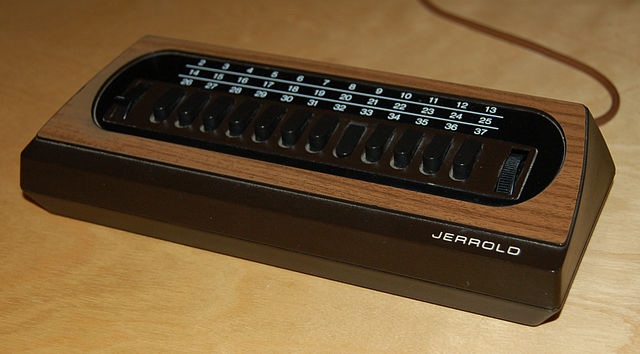This could be a mess for so many reasons. Several sources including Engadget and The Wall Street Journal (subscription required) are reporting that the FCC plans on taking another swipe at the growing problem of expensive cable box rentals. I suppose before I even get started, I ought to tell you that this blog is operated by Signal Group which is a DIRECTV, DISH and TiVo dealer but my opinions are my own and only mine. So there, lawyers.
Here’s the problem: some unscrupulous cable companies have been raising the rental fees on their boxes to the point where it’s ridiculous. $30 a month for a DVR (and that doesn’t include the extra fee to enable it) isn’t unheard of. Unlike cable modems, you can’t just buy your own; there’s practically no market for third-party boxes with the exception of TiVo. People are upset, and that does make sense. But the problem is that putting aside the high fees, the system works.
Some cable boxes use CableCARD technology, which was the FCC’s last attempt to deregulate the cable box market. CableCARDs look like fat metal credit cards and let cable companies use off-the-shelf cable boxes and give them the personality they need in order to make sure customers get only the channels they want. At one point there was this big hope that CableCARD would take over the world and there would be TVs that didn’t need boxes. It didn’t happen.
Other companies use their own dedicated boxes, or special software built into a generic box like the Motorola/Arris DVR or the Pace cable box that you’ve probably seen in friends’ houses. This makes it possible to offer even more customized features but the development costs are high. This is the sort of thing the FCC wants to eliminate — they want to make it possible for anyone to buy a cable box off the shelf and stop paying rental fees.
It’s worth saying that so far, satellite TV companies have been exempt from these rules because they are allowed to own the decryption software on their boxes. It’s part of the special deal that satellite companies get, considering that satellite TV doesn’t require the provider to rip up the streets of your town to provide service.
However, with DIRECTV now part of AT&T and persistent rumors that DISH could merge with a smaller cable concern, the big satellite TV companies are also involved. Any change the FCC makes at this point would certainly have an effect on the way they do business. This is especially true if you buy into the common-sense notion that you’ll see common hardware between AT&T’s terrestrial (U-Verse) and satellite (DIRECTV) units. Such hardware would have to meet both FCC rules and satellite decryption standards.
While this seems like a great idea, I mean, trying to increase competition in the cable box space and drive prices down using market pressures, my big fear is that it isn’t going to work. In order for the market to drive down prices, you’d really need one completely universal solution that could be put out to cable, fiber, and satellite users and that could be developed to offer all the features that you need. Otherwise what you end up with is something similar to CableCARD which doesn’t fit every system and doesn’t give you full functionality.
The other piece of the puzzle is that there’s really no model for establishing lower cost for this type of equipment. You can look at cable modems but really the modem technology is something you can standardize, it doesn’t have anything to do with the user interface so it can all be interchangeable. When you look at cable boxes, they are vastly different and that takes a lot of money to develop. To date, only TiVo has managed to offer a third-party box and it still carries a monthly fee which can get up about $20 depending on how you install. If the goal is to drive down prices, it’s really hard to know how you’ll get there.
I think that if there is a good solution, it comes in the form of client/server technology and smart TV apps. Think about what DIRECTV and DISH do, where the DVR itself does almost 100% of the work and the box by the TV does very little. It just sends commands back and forth securely and not much else. This lets TV manufacturers build apps right into smart TVs that cut the clutter, make installs easier, and keep costs down.
Thin client solutions are one side of the equation; the DVR is the other. What the FCC should be doing is working on finding a better solution for cloud DVR services. Right now unless the pay-TV company negotiates separately with every content provider, it’s illegal to store a single copy of a program on a server and send it on-demand to more than one customer. I know, that sounds totally silly because that’s what everyone wants, right? If the FCC provided a better pathway to cloud DVR services, then DVRs themselves could get cheaper since most of the programming could be stored on big servers in the cable company office instead of being stored locally on the DVR.
If the FCC creates a clear pathway that lets people watch TV on demand the way they want to watch it, DVRs would get cheaper, service fees would drop and it’s possible that there could actually be a standard device that could work with multiple providers just by launching different apps on it, similar to today’s streaming boxes. That’s the way toward the future, and my concern right now is that the FCC is stuck in the past.

